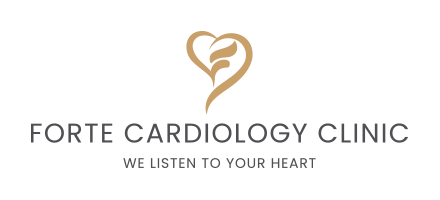The heart, a vital organ for pumping blood throughout the body, is susceptible to various conditions that can compromise its function. Cardiovascular diseases, including arrhythmias, heart failure, and bradycardia, pose significant threats to heart health. These conditions often necessitate innovative and modern treatment approaches to enhance affected individuals’ quality and longevity of life.
Cardiac Implantable Electronic Devices (CIEDs) is one of these revolutionary solutions. CIEDs are specialised devices designed to monitor, regulate, and sometimes restore the heart’s normal rhythm. These devices encompass a range of technologies, including pacemakers, Implantable Cardioverter Defibrillators (ICDs), and Cardiac Resynchronization Therapy (CRT) devices. Each type of CIED serves a unique purpose in addressing specific cardiac conditions, offering patients a lifeline when traditional treatments may fall short.
Types of CIEDs
Pacemakers
Pacemakers are small, implantable devices designed to regulate the heart’s rhythm by generating electrical impulses. They are primarily used in cases of bradycardia, where the heart beats too slowly. Pacemakers consist of a pulse generator and leads attached to the heart. The pulse generator emits electrical signals to stimulate the heart muscle, ensuring a consistent and healthy heart rate.
Implantable Cardioverter Defibrillators (ICDs)
ICDs are advanced devices designed to monitor and regulate heart rhythm, specifically focusing on preventing life-threatening arrhythmias. ICDs continuously monitor the heart’s activity, and when they detect abnormal rhythms, they deliver precisely timed electrical shocks to restore normal rhythm. These devices act as a crucial safeguard against sudden cardiac arrest and are often recommended for individuals with a history of ventricular arrhythmias.
Cardiac Resynchronization Therapy (CRT) Devices
CRT devices, or biventricular pacemakers, are specialised implants used to manage heart failure. Heart failure often results in desynchronised contractions of the heart chambers, leading to inefficient pumping. CRT devices coordinate the contractions of the heart’s ventricles, enhancing overall cardiac function. By synchronising the heartbeat, these devices improve the efficiency of blood circulation, relieving symptoms and enhancing the patient’s quality of life.
How CIEDs Work
Monitoring and Regulating Heart Rhythm
CIEDs continuously monitor the heart’s electrical activity, ensuring it stays within a normal rhythm. In the case of pacemakers, they detect slow heart rates and send electrical impulses to stimulate the heart to beat at an appropriate pace. ICDs, on the other hand, monitor for irregular and potentially dangerous rhythms, intervening with timely shocks to restore normalcy.
Delivering Electrical Impulses
Pacemakers and CRT devices deliver controlled electrical impulses to the heart muscle through leads. These impulses mimic the natural electrical signals that regulate the heart’s contractions. By doing so, they ensure that the heart maintains a steady and coordinated rhythm, preventing issues related to irregular heartbeats.
Anti-tachycardia Pacing and Defibrillation
ICDs are equipped with advanced features such as anti-tachycardia pacing and defibrillation. Anti-tachycardia pacing involves delivering rapid pacing pulses interrupting fast, abnormal heart rhythms. If this pacing is ineffective, the device can deliver a defibrillation shock, a more vital electrical impulse to restore a normal heartbeat. This capability is crucial in preventing sudden cardiac death in individuals at risk of ventricular arrhythmias.
Conditions that May Require CIED Implantation
The implantation of CIEDs is guided by carefully considering the specific cardiac condition and each patient’s unique needs. These devices address the underlying issues and significantly enhance the overall cardiac function, providing patients with a tailored and effective treatment approach.
Bradycardia
Bradycardia, a condition characterised by an abnormally slow heart rate, is a common indication for CIED implantation. When the heart beats too slowly, it may not pump enough blood to meet the body’s needs. Pacemakers are often recommended for individuals experiencing bradycardia to ensure a consistent and healthy heart rate. By delivering electrical impulses to stimulate the heart, pacemakers help maintain an appropriate rhythm, preventing symptoms such as fatigue, dizziness, and fainting.
Arrhythmias
Arrhythmias, irregular heart rhythms, can pose serious health risks and may lead to complications such as stroke or sudden cardiac arrest. Implantable Cardioverter Defibrillators (ICDs) are frequently prescribed for individuals with a history of ventricular arrhythmias. These devices continuously monitor the heart’s activity and intervene by delivering precisely timed electrical shocks to restore a normal rhythm. ICDs act as a vital safeguard, particularly in patients at risk of life-threatening arrhythmias.
Heart Failure
Heart failure is a condition where the heart’s pumping ability is compromised, leading to insufficient blood circulation. Cardiac Resynchronization Therapy (CRT) devices are often recommended for individuals with heart failure, especially when there is evidence of dyssynchrony in the contractions of the heart chambers. CRT devices work by coordinating the timing of contractions, improving the efficiency of blood pumping, and alleviating symptoms associated with heart failure, such as shortness of breath and fatigue.
The Implantation Process
Pre-Implantation Assessments
Patient Evaluation –
A thorough patient evaluation is conducted before the implantation of Cardiac Implantable Electronic Devices (CIEDs). This evaluation involves a comprehensive assessment of the patient’s medical history, current cardiac condition, and overall health. Factors such as age, existing medical conditions, and lifestyle are considered to determine the most suitable type of CIED and the potential benefits for the individual.
Diagnostic Tests –
Diagnostic tests play a crucial role in pre-implantation assessments. Electrocardiograms (ECGs or EKGs), echocardiograms, and other imaging studies provide valuable insights into the heart’s structure, function, and electrical activity. These tests help identify specific cardiac abnormalities, guide the selection of the appropriate CIED, and assist in planning the implantation procedure.
The Implantation Procedure
Surgical Process –
The implantation of CIEDs is a surgical procedure typically performed in a specialised cardiac electrophysiology lab or an operating room. The patient is positioned on an operating table, and the area where the device will be implanted (usually the chest or upper abdomen) is cleaned and sterilised.
For pacemakers and ICDs, small incisions create a pocket beneath the skin, where the device’s pulse generator is placed. Leads (thin, insulated wires) are threaded through blood vessels and positioned in specific locations within the heart. In the case of CRT devices, an additional lead is often placed to coordinate the contractions of the heart chambers.
Once the leads and pulse generator are in place, they are connected, and the incisions are closed with stitches. The entire procedure is guided by fluoroscopy and other imaging techniques to ensure precise placement of the device components.
Anaesthesia Considerations
Anaesthesia ensures the patient is comfortable and pain-free during the implantation procedure. The type of anaesthesia used varies depending on the complexity of the surgery and the patient’s overall health. In many cases, local anaesthesia combined with sedation is sufficient, allowing the patient to remain awake but relaxed. However, general anaesthesia may be preferred for more intricate procedures or for patients who may be better served by being unconscious during the surgery.
Post-Implantation Care and Recovery
Following CIED implantation, patients are monitored closely to assess the device’s functionality and ensure proper healing. In the immediate postoperative period, individuals may experience discomfort, swelling, or bruising around the implantation site.
Post-implantation care involves regular follow-up appointments with the healthcare team. During these appointments, the device’s settings are adjusted as needed, and its performance is evaluated. Patients are educated on how to care for the incision site, and any questions or concerns are addressed.
Recovery times vary, but most patients can resume normal activities within a few days to weeks, depending on the complexity of the procedure and individual healing rates. Patients need to follow the guidelines provided by their healthcare team and attend scheduled follow-up visits to ensure the implanted device’s ongoing effectiveness and proper functioning.
Benefits of CIEDs
Cardiac Implantable Electronic Devices profoundly impact individuals’ overall well-being, allowing them to lead more active and fulfilling lives while providing a safety net against life-threatening cardiac events.
Improvements in Quality of Life
One of the significant benefits of Cardiac Implantable Electronic Devices (CIEDs) is the substantial improvement in the quality of life for individuals with various cardiac conditions. Specifically:
Symptom Alleviation – CIEDs, such as pacemakers and CRT devices, effectively manage bradycardia and heart failure symptoms. By regulating heart rhythm and optimising cardiac function, these devices alleviate symptoms such as fatigue, shortness of breath, and dizziness, allowing patients to engage in daily activities more comfortably.
Increased Exercise Capacity – Patients with CIEDs often experience enhanced exercise tolerance. Pacemakers ensure a consistent heart rate, enabling individuals to participate in physical activities without the limitations imposed by an irregular heartbeat or bradycardia.
Improved Mental Well-being – The reassurance of having an implantable device that actively monitors and addresses cardiac issues can positively impact the mental well-being of patients. Knowing that the risk of sudden cardiac events is significantly reduced contributes to a sense of security and peace of mind.
Enhancing Heart Function and Preventing Sudden Cardiac Death
Optimised Cardiac Function – CIEDs, particularly Implantable Cardioverter Defibrillators (ICDs) and Cardiac Resynchronization Therapy (CRT) devices, are crucial in optimising cardiac function. ICDs continuously monitor heart rhythm and intervene with timely electrical shocks when life-threatening arrhythmias are detected. CRT devices coordinate the contractions of the heart chambers, improving overall cardiac efficiency and pumping ability.
Preventing Sudden Cardiac Death – ICDs are instrumental in preventing sudden cardiac death by delivering prompt and precisely calibrated electrical shocks to restore normal heart rhythm. For individuals at risk of ventricular arrhythmias, especially those with a history of cardiac events, ICDs act as a life-saving intervention, providing an immediate response to critical situations.
Long-Term Survival – Implementing CIEDs has contributed significantly to the long-term survival of individuals with severe cardiac conditions. These devices not only manage symptoms but also actively intervene during potentially life-threatening situations, enhancing overall survival rates and extending the lives of many patients.







